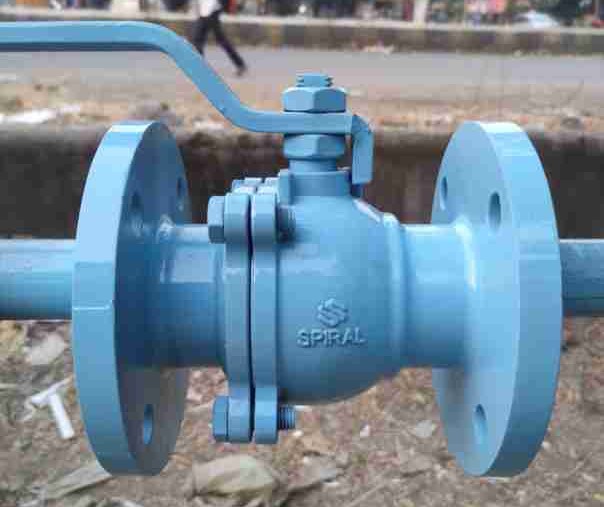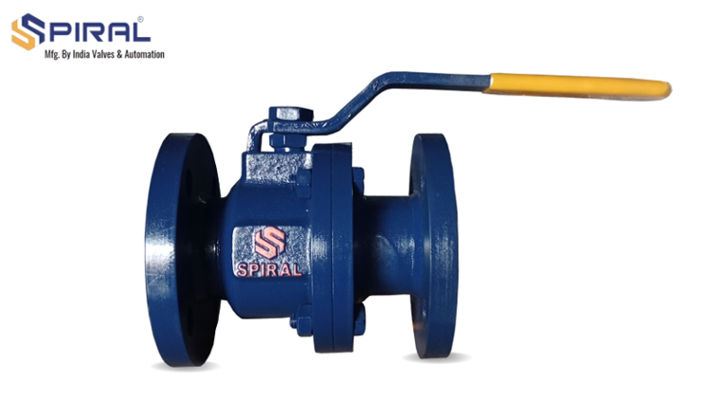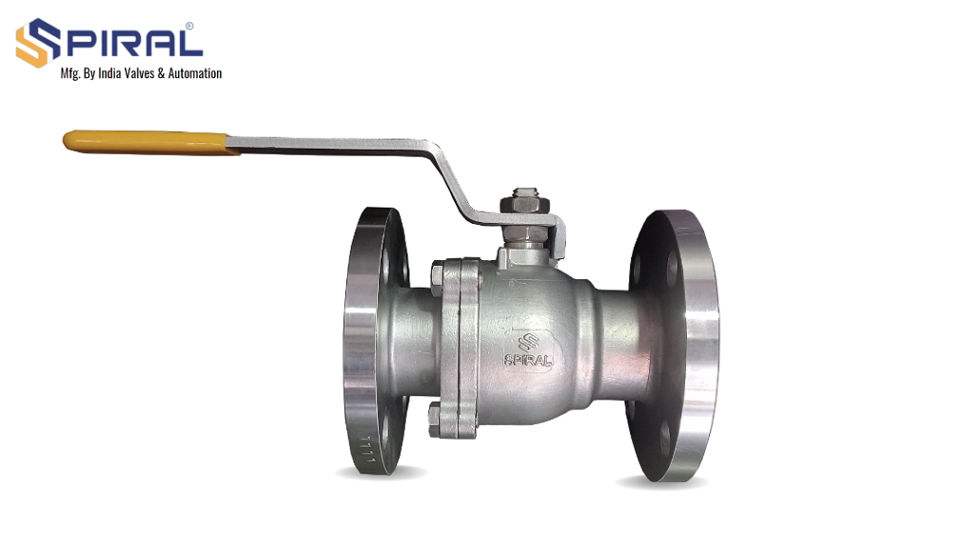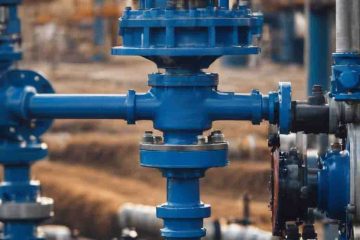Ball Valve: working, usage and feature

Continue reading to explore:
-
1.The definition and operational principles of ball valves.
-
2.The components comprising a ball valve.
-
3.The materials used in constructing ball valves.
-
4.The benefits and constraints associated with ball valves.
-
5..And a wealth of additional information…
Chapter 1: The definition and operational principles of ball valves.
A ball valve serves as a stopper in a piping system, allowing, obstructing, and regulating the flow of liquids, gases, and vapors by turning a spherical ball with an inner bore. This ball is positioned between two seats and connected to a control mechanism that turns it. When the bore’s cross-section aligns perpendicularly with the flow direction, the valve prevents fluid passage. On the other hand, when the bore aligns with the flow, the fluid passes through, with the flow rate determined by the bore’s exposed area.
Ball valves, similar to plug valves and butterfly valves, belong to the category of quarter-turn valves. They can be operated manually or with an actuator. The most straightforward method involves using a wrench or lever that an operator manually turns. By applying torque, the lever arm rotates 90° either clockwise or counterclockwise to open or close the valve. An open valve is indicated when the lever arm aligns parallel to the pipe, while a closed valve is indicated when the lever arm is perpendicular.
Ball valves come in various designs and configurations to meet diverse industrial requirements. Standards and specifications for ball valves vary depending on their application within different industries.

link to the above valve : https://spiralvalve.com/ball-valve/
Chapter 2: The components comprising a ball valve.
Here are the different components of a ball valve and their roles in ensuring its proper functionality and performance:
- Valve Body: Serving as the primary enclosure for the ball valve, the valve body houses essential elements such as the ball and seats.
- Operating Handle: The handle permits manual rotation of the ball to regulate fluid flow within the valve.
- Stem: Connecting the handle to the ball, the stem transmits the rotational motion applied to the handle to the ball.
- Gland Nut: The gland nut compresses packing material around the stem, effectively preventing any potential leakage.
- Inlet Port: This is the entry point through which fluid enters the valve.
- Outlet Port: Fluid exits the valve through the outlet port.
- Rotating Ball: Arguably the most critical part of the ball valve, the ball controls fluid flow. When aligned with the flow path, fluid can pass through, but a 90-degree rotation blocks it.
- Thrust Washer: This component reduces friction between the ball and the valve body, enhancing overall performance and longevity.
- Joint Gasket: It forms a seal between the valve body and the piping, effectively preventing any leaks.
- Seats: These are located on either side of the ball, creating a seal when the ball is turned to the closed position, preventing fluid passage.
- Bonnet: Covering the stem and packing material, the bonnet offers access for maintenance.
- Actuator: Used to automate the valve, the actuator can be electric, pneumatic, or hydraulic. It rotates the ball in response to control signals, managing fluid flow.
- Locking Mechanism: A locking device safeguards against unauthorized or accidental valve operation.
- Stem Extension: When mounted further from the valve body, a stem extension extends the reach of the handle or actuator, useful in challenging-to-access locations.
- Stem Protector: This component shields the stem from damage or corrosion.
- Cavity Filler: In full-port ball valves, a cavity filler fills the space behind the ball, minimizing fluid accumulation and damage due to thermal expansion.
- Drain Valve: For maintenance or repairs, a drain valve allows fluid to be removed from the valve and piping system.
Chapter 3: The materials used in constructing ball valves.
Materials for Ball Valves
Ball valves are constructed using a variety of materials, each offering distinct advantages. It’s essential to understand the fundamental properties of these materials before making a purchasing decision.
- 1.PVC (Polyvinyl Chloride) Polyvinyl Chloride, commonly known as PVC, is a frequently used plastic in the production of ball valves. PVC stands out due to its flexibility, a departure from metal valves. Additionally, the smooth surface of PVC allows for easy movement of valve components.
- 2.CPVC (Chlorinated PVC) Chlorinated PVC, or CPVC, shares similarities with PVC but can withstand higher temperatures, making it suitable for applications involving hot water.
- 3.Bronze and Brass Bronze is composed of copper, zinc, tin, and lead, making it ideal for low to medium-pressure systems and intricate castings. Its resistance to corrosion and wear enhances its suitability. Brass, while similar to bronze in machinability, offers a more cost-effective alternative.
- 4.Iron Iron is commonly used in pipelines handling steam, water, oil, and gas. Its ability to endure a wide range of temperatures and pressures makes it a preferred material for manufacturing ball valves, despite the initial investment required for superior performance.
- 5.Stainless Steel Stainless steel is another prevalent material for crafting ball valves, valued for its durability and resistance to corrosion. It finds applications in various systems, including general plant setups and geochemical systems.

link to ball valve : https://spiralvalve.com/ball-valve/
Chapter 4.The benefits and constraints associated with ball valves.
- 1.Achieving the lowest flow resistance, effectively reducing it to zero.
- 2.The valve operates without the need for lubrication, ensuring reliable performance in corrosive environments and with low boiling point liquids.
- 3.Maintains a complete seal across a wide range of pressures and temperatures.
- 4.Enables rapid opening and closing, with certain designs achieving a remarkable 0.05 to 0.1-second response time, making it suitable for integration into automated test bench systems. Smooth operation during quick valve actuation.
- 5.The spherical closure automatically aligns itself at the boundary position.
- 6.When fully open or closed, the sealing surfaces of the ball and valve seat remain isolated from the medium, preventing erosion even when high-speed flow occurs.
- 6.Features a compact and lightweight design, making it the most suitable valve structure for cryogenic medium systems.
- 7.The symmetrical valve body, particularly the welded configuration, effectively withstands pipeline-induced stress.
- 8.The valve’s shut-off components can withstand high pressure differences during closure.
- 9.Designed for direct burial in the ground, preventing internal parts from erosion and offering a maximum service life of up to 30 years. It is the ideal valve choice for oil and gas pipelines.
- 10.Ensures dependable sealing on both sides for the working medium.
a.The primary sealing material for the ball valve’s main valve seat is PTFE. PTFE is chemically inert and possesses comprehensive characteristics, such as a low coefficient of friction, stable performance, resistance to aging, a wide temperature range, and excellent sealing capabilities.
However, it’s crucial to consider PTFE’s physical characteristics, which include a higher expansion coefficient, sensitivity to cold flow, and poor thermal conductivity when designing the valve seat seal. Consequently, the seal’s reliability is compromised when the sealing material becomes hard. Additionally, PTFE has a low-temperature resistance limit and should only be used at temperatures below 180°C, as temperatures beyond this range will cause the sealing material to deteriorate. In long-term applications, it is generally advisable to operate it at or below 120°C.
b.Its control performance is inferior to that of globe valves, particularly when comparing it to pneumatic valves (or electric valves).
Chapter 5.And a wealth of additional information…
Users should keep several considerations in mind to ensure the optimal performance of ball valves:
- Throttling is feasible with ball valves but should be done sparingly. When a ball valve is partially closed, the seats are exposed to high-velocity fluid flow and increased compressive forces, leading to erosion. Therefore, it is not recommended for extended throttling applications. Standard ball valves may be suitable for throttling low-pressure gases, while segmented ball valves can be used in limited throttling scenarios. Nevertheless, advanced ball valves equipped with modified designs or seats made from specialized materials designed for throttling are commercially available.
- The maximum allowable working temperature of the seats imposes a limit on their applications. For higher temperatures, users can consider alternatives such as metal or ceramic seats.
- Accumulation of suspended particles between the valve body and the ball can result in leakage, erosion, and valve malfunction. As a result, it is advisable to conduct regular maintenance on ball valves used in handling slurries and suspensions.
Conclusion:
Ball valves are utilized as shut-off devices to control fluid flow by rotating a ball containing a bore, typically by 90 degrees. These valves can be operated either manually or with the assistance of an actuator.
A ball valve typically comprises three main components: the ball, shaft, and seat, all housed within the valve assembly. Positioned between two seats, the ball is connected to the operating mechanism via a stem.
Various types of ball valves are categorized based on their housing assembly, ball design, and bore profile. Ball valves are designed in numerous configurations to meet the specific requirements of different industries.
The advantage of ball valves lies in their segmented housing, which simplifies cleaning and maintenance but increases acquisition costs.
Selecting the appropriate ball design depends on the anticipated working pressure of the valve. A smaller bore diameter results in a greater pressure drop across the valve, making pumping more challenging and costly. Multiport bore configurations are available for splitting and combining flow rates and redirecting flow.
The material used for ball valves must exhibit hardness, toughness, and rigidity. Seats require a low coefficient of friction, high compressive strength, and compatibility with the working fluid. Nevertheless, the application of ball valves is limited by the working temperature of the seats.
Ball valves are known for their ease of operation, quick activation, and minimal risk of leakage. However, it’s essential to note that throttling is not recommended for ball valves.
To ensure optimal performance and prevent the accumulation of particles between the ball and the body, regular maintenance is imperative.





0 Comments